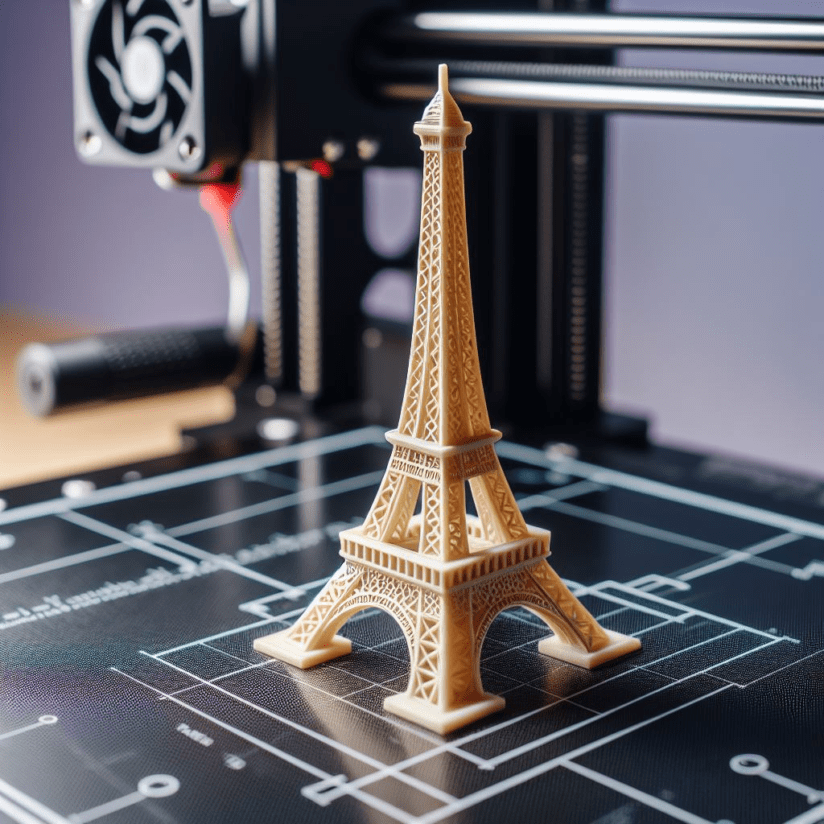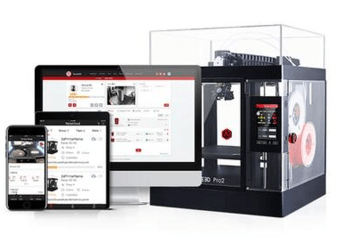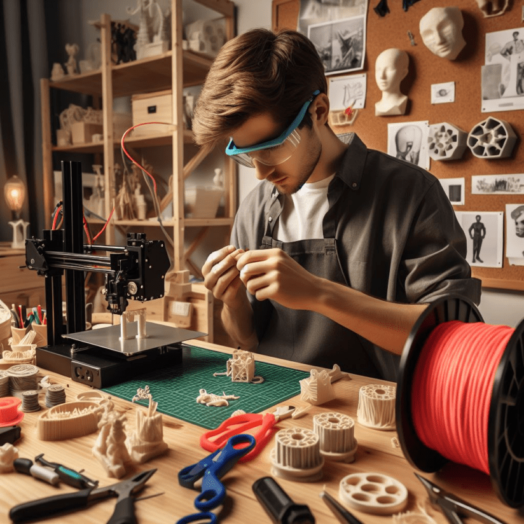3D printing, also known as additive manufacturing, is a fascinating process that creates three-dimensional objects from a digital file. This blog post will take you on a deeper dive into the world of 3D printing, exploring its workings, materials, types, applications, and community resources. By the end, you’ll have a comprehensive understanding of this innovative technology.
—
How It Works
The process of 3D printing starts with a digital 3D model. This model can be designed using computer-aided design (CAD) software or scanned from an existing object. The digital file is then processed by slicing software, which divides the model into thin horizontal layers. These layers serve as a blueprint for the 3D printer.
Once the model is sliced, the 3D printer begins building the object layer by layer. The printer deposits material only where needed, creating a solid structure from the bottom up. This method is different from traditional manufacturing, which often involves cutting away material to achieve the desired shape. By adding material instead of subtracting it, 3D printing allows for the creation of complex geometries and intricate structures that would be difficult or impossible to produce with conventional methods.

Materials Used
A variety of materials can be used in 3D printing, each offering different properties. The choice of material depends on the requirements of the final object. Here are some common materials used in 3D printing:
– Plastics: Plastics are the most widely used material, and they are ideal for creating lightweight and durable objects. Common types include PLA (polylactic acid) and ABS (acrylonitrile butadiene styrene).
– Resins: Used in stereolithography (SLA) and digital light processing (DLP) printers, resins can produce high-resolution prints with fine details.
-Metals: Metals like titanium, aluminum, and stainless steel provide strength and durability for industrial applications. Metal 3D printing is often used in the aerospace and automotive industries.
– Ceramics: Ideal for creating heat-resistant and strong objects, ceramics are used in both artistic and industrial applications.
– Composites: These are materials made by combining two or more different substances, like carbon fiber or glass fiber, to enhance strength and other properties.

Types of 3D Printers
There are several types of 3D printers, each using different technologies to build objects. Here are the most common types:
– Fused Deposition Modeling (FDM): The most popular type of 3D printer, FDM uses a continuous filament of thermoplastic material. The filament is heated and extruded through a nozzle, building the object layer by layer.
– Stereolithography (SLA): SLA printers use a laser to cure liquid resin into solid plastic. This method is known for producing high-resolution prints with fine details.
– **Selective Laser Sintering (SLS)**: SLS printers use a laser to fuse powdered material, such as nylon or metal, into solid layers. This method is ideal for creating durable and functional parts.
– Digital Light Processing (DLP): Similar to SLA, DLP uses a digital light projector to cure liquid resin. DLP printers can produce high-resolution prints quickly.
Applications
3D printing has a wide range of applications across various industries. Here are some notable examples:
– Prototyping and Manufacturing: In industries like aerospace and automotive, 3D printing is used to create prototypes and custom parts. This allows for rapid iteration and testing before mass production.
– Medical Uses: 3D printing is revolutionizing healthcare by enabling the creation of custom prosthetics, dental devices, and even bioprinted tissues and organs. This technology allows for personalized medical solutions tailored to individual patients.
– Education: In schools and universities, 3D printing is used as a teaching tool to help students understand complex concepts in science, technology, engineering, and mathematics (STEM).
– Hobbyists and Makers: For hobbyists, 3D printing offers a way to bring creative ideas to life. From custom toys and models to unique household items, the possibilities are endless.
Community and Resources
The 3D printing community is vibrant and supportive, offering a wealth of resources for beginners and experienced users alike. Platforms like Thingiverse provide a vast collection of digital designs that you can download and print on your own 3D printer. It’s a great place to find inspiration, share your creations, and connect with others who share your passion for 3D printing.
For those looking to get started with 3D printing, there are numerous online tutorials, forums, and courses available. These resources can help you learn the basics, troubleshoot issues, and improve your skills. Whether you’re interested in specific 3D printer models or have questions about materials and techniques, the community is always ready to help.

The Future of 3D Printing
The future of 3D printing looks promising, with advancements in technology continually expanding its capabilities and applications. Here are some trends and developments to watch for:
Advancements in bioprinting technology have opened up the possibility of printing living tissues and organs, presenting a potentially groundbreaking development in medicine. This innovation could significantly diminish the demand for organ transplants, offering hope to many patients on waiting lists. Additionally, it could pave the way for personalized medical treatments tailored to individual patients, potentially leading to more effective and targeted care.
The construction industry is actively exploring the applications of 3D printing for building houses and other structures. This emerging technology promises a more sustainable and efficient alternative to traditional construction methods, potentially significantly reducing construction timelines and waste. By utilizing 3D printing, construction companies can explore innovative designs and create structures with greater precision and speed.
As 3D printing technology becomes more accessible, the potential for creating customized products tailored to individual needs and preferences continues to expand. This trend is especially beneficial in fields like healthcare, where personalized medical devices and prosthetics can be designed and produced to fit each patient’s unique specifications perfectly.
Sustainability is a crucial advantage of 3D printing, as it enables the use of recycled materials and reduces waste in manufacturing processes. By embracing 3D printing, industries can adopt more sustainable practices while minimizing environmental impact. This can revolutionize manufacturing and contribute to a more eco-friendly global economy.

Getting Started with 3D Printing
If you’re interested in exploring 3D printing, here are some steps to help you get started:
1. Choose a 3D Printer: Choose the type of printer that best suits your needs. FDM printers are a good choice for beginners due to their affordability and ease of use.
2. Learn the Basics: Familiarize yourself with the basics of 3D modeling and slicing software. There are many free resources and tutorials available online.
3. Select Materials: Choose the materials you want to work with, considering the properties needed for your projects.
4. Start Printing: Begin with simple projects to build your confidence and skills. As you gain experience, you can move on to more complex designs.
5. Join the Community: Connect with other 3D printing enthusiasts through online forums, social media groups, and local maker spaces. Sharing knowledge and experiences can greatly enhance your learning journey.
Conclusion
3D printing is a remarkable technology that offers endless possibilities for innovation and creativity. From creating prototypes and medical devices to bringing artistic visions to life, the applications are vast and varied. By understanding how 3D printing works, the materials used, and the types of printers available, you can embark on your own 3D printing journey. Whether you’re a hobbyist, educator, or industry professional, the world of 3D printing is full of opportunities waiting to be explored.
—
Feel free to go to the comment section to ask more questions or seek further guidance as you dive into the exciting world of 3D printing. Happy printing! ?️
—
';
shrls_str_841 = shrls_str_841+'';
shrls_str_841 = shrls_str_841+'';
shrls_str_841 = shrls_str_841+'
